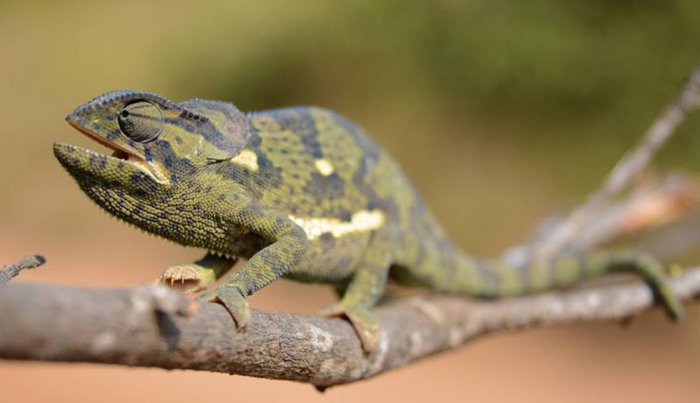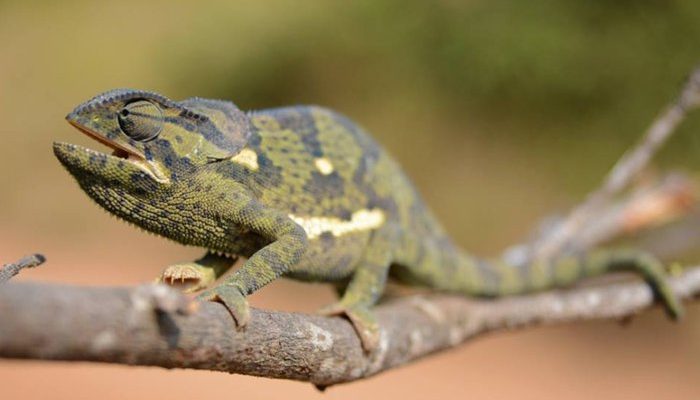
So, if you’re pondering about the lifespan of a flap-necked chameleon, you’re not alone. Understanding their life expectancy can help you become a better pet owner if you decide to welcome one into your home. Let’s explore the lifespan of these amazing creatures, the factors that influence it, and what you can do to ensure they stay healthy and vibrant through the years.
Flap-Necked Chameleons: An Overview
Flap-necked chameleons are native to the warm, tropical regions of Africa. They thrive in various habitats, from savannas to dense forests. With their striking colors and ability to blend into their surroundings, they have developed incredible survival tactics. The flap on their neck isn’t just for show; it helps them communicate, especially during mating rituals or when they feel threatened.
Lifespan in the Wild vs. Captivity
In their natural habitats, flap-necked chameleons typically live around 5 to 7 years. However, this lifespan can vary greatly depending on environmental factors such as food availability, predators, and habitat destruction. On the flip side, when kept as pets, their lifespan can be significantly longer—sometimes reaching up to 10 years or more with the right care. This difference is mainly due to fewer threats in a controlled environment and access to regular veterinary care.
Factors Influencing Lifespan
When it comes to how long a flap-necked chameleon will live, several factors come into play.
- Diet: A balanced diet of insects and occasionally fruit is crucial. Feeding them a variety of live foods ensures they receive all necessary nutrients.
- Habitat: A clean and spacious living environment minimizes stress and promotes healthy living.
- Health care: Routine vet check-ups can catch any potential health issues early, increasing their chances of living a longer life.
Environmental Considerations
Creating a safe and stimulating environment for your chameleon is essential. They need space to climb and explore, as well as appropriate temperature gradients to regulate their body heat. If their habitat is too small or not temperature-controlled, it can lead to stress, which affects their lifespan.
Proper Care for Longevity
If you want your flap-necked chameleon to thrive, you need to be proactive about its care. Here are a few tips:
- Diet: Offer a mix of crickets, mealworms, and other insects. Dust these with calcium powder a few times a week to prevent deficiencies.
- Humidity: Maintain the right humidity levels in their habitat, as chameleons need moisture to stay healthy. Regular misting can help.
- Lighting: Use UVB lighting for about 12 hours a day to help them synthesize vitamin D3, essential for calcium absorption.
Creating a Stress-Free Environment
Try to minimize disturbances in their habitat. Chameleons can get stressed out easily, especially if they see their reflection in a shiny surface or if there are loud noises. Providing hiding spots like branches and foliage can help them feel secure.
Common Health Issues to Watch For
Even with the best care, flap-necked chameleons can face health challenges. Here are a few common problems and what you can do about them:
- Metabolic Bone Disease: This can occur if they don’t get enough calcium or UVB light. Regular check-ups and a proper diet are essential.
- Stress: As mentioned, stress can lead to serious health issues. Keep their environment calm and quiet.
- Infectious Diseases: Regular health check-ups can help catch infections early, and proper hygiene in their habitat is crucial.
Signs of a Healthy Chameleon
Keep an eye out for bright colors, active behavior, and a healthy appetite. If you notice any dull colors or lethargy, it might be time for a vet visit.
The Role of Genetics
Genetics play a vital role in the lifespan of flap-necked chameleons. Just like humans, some chameleons have genetic predispositions that affect their overall health and longevity.
Breeding and Lineage Matters
If you’re considering getting one from a pet store or breeder, it’s worth asking about the lineage. Breeding practices can impact health traits. For instance, certain breeding lines may be more prone to health issues than others.
Understanding how long a flap-necked chameleon can live isn’t just a fun fact; it’s crucial for anyone considering bringing one into their home. By providing the right care, diet, and environment, you can help ensure these unique reptiles live long, healthy lives.
Remember, every chameleon is unique, and factors like genetics, care, and environment all play a role in their lifespan. With a little effort and a lot of love, your flap-necked chameleon can be a colorful companion for many years to come. So, whether you’re new to chameleons or a seasoned keeper, take this knowledge and create the best home possible for these remarkable creatures.

